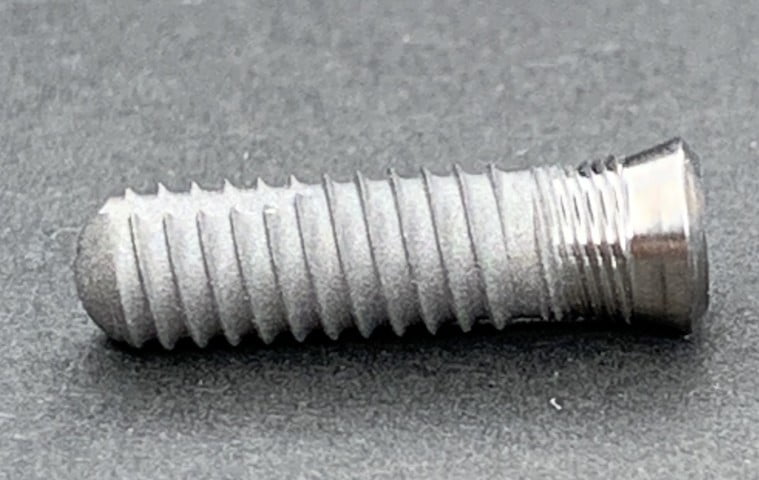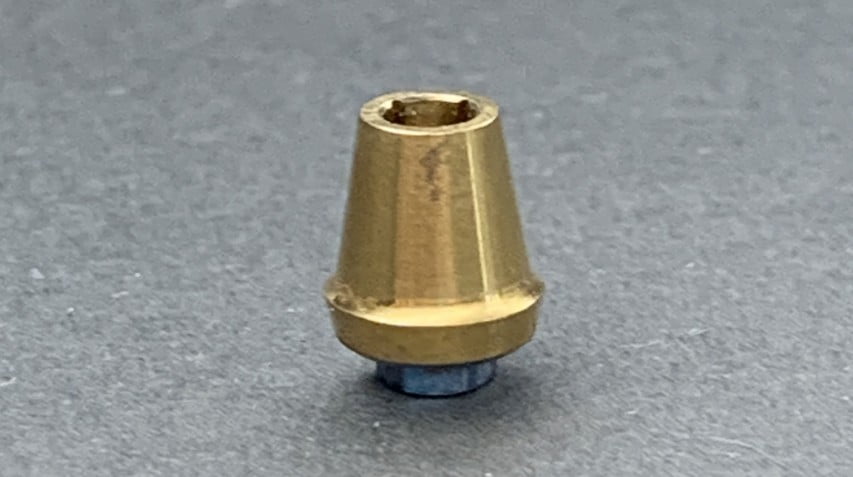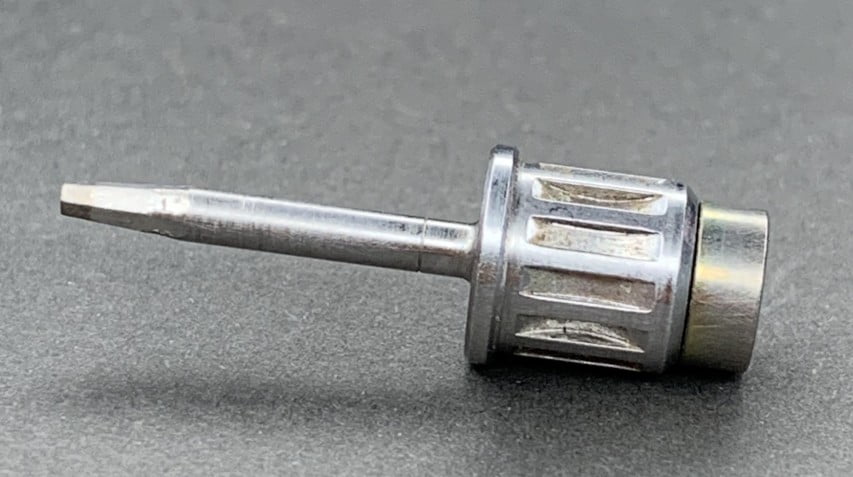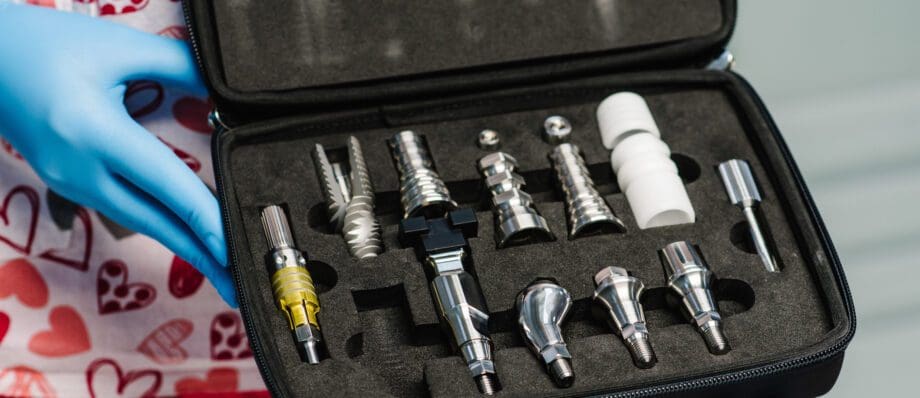Dental implants have revolutionized the field of dentistry, providing a highly effective and long-lasting solution for patients who have lost one or more teeth. These remarkable prosthetic devices mimic the natural function and appearance of real teeth, enabling individuals to regain their smile, confidence, and the ability to chew and speak with ease. However, understanding the various components of dental implants is crucial for both patients and dental professionals. In this comprehensive guide, we will delve into the different parts of dental implant, how they work, and the role each component plays in restoring a beautiful and functional smile.
Table of Contents
ToggleImplant Fixture

The implant fixture is the foundation of a dental implant. It serves as a replacement for the tooth root and is typically made of biocompatible materials like titanium or zirconia. These materials are chosen for their ability to fuse with the jawbone through a process called osseointegration. Osseointegration ensures that the implant fixture becomes a stable and durable anchor for the other components of the dental implant. This part is surgically placed into the jawbone during a minor oral surgery procedure.
The implant fixture’s design is critical to its success. It features a screw-like or cylindrical shape with a roughened surface to facilitate osseointegration. The implant fixture is available in various sizes and lengths to accommodate different patient needs, bone types, and locations in the mouth. The selection of the right size and type is a crucial decision made by the dentist to ensure a secure and long-lasting implant.
Abutment

The abutment is the connector that links the implant fixture to the prosthetic tooth or crown. It protrudes above the gumline and plays a significant role in the overall success and aesthetics of the dental implant. Abutments are typically made of metal, ceramic, or a combination of both, and they come in different shapes and sizes to match the specific needs of the patient.
The abutment is attached to the implant fixture after the osseointegration process is complete, which may take several months. It serves as a support structure for the crown, bridge, or denture, providing a secure connection while allowing the prosthetic tooth to mimic the natural tooth’s appearance and function.
Abutments can be either stock (prefabricated) or custom-made, depending on the patient’s requirements. Custom abutments are often preferred in cases where a patient’s jawbone structure or gumline needs special consideration to achieve the best aesthetic and functional results.
Prosthetic Tooth (Crown, Bridge, or Denture)
The prosthetic tooth is the visible part of the dental implant and is what the world sees when you smile. It is custom-designed to match the color, shape, and size of your natural teeth, ensuring a seamless and natural appearance. The prosthetic tooth can take various forms:
- Dental Crown
- Dental Bridge
- Denture
Dental Crown
A single prosthetic tooth used to replace a single missing tooth.
Dental Bridge
A prosthetic tooth or teeth used to replace multiple missing teeth in a row. It is anchored to dental implants on either side or to natural teeth using dental crowns.
Denture
A removable prosthetic that can replace multiple teeth. It is typically secured in place with dental implants, providing greater stability and comfort compared to traditional removable dentures.
The prosthetic tooth is typically made from materials like porcelain, ceramic, or a combination of materials, chosen for their strength, durability, and natural appearance. The dentist works closely with dental technicians to create a prosthetic tooth that blends seamlessly with the patient’s natural teeth, ensuring a beautiful smile that is both functional and aesthetically pleasing.
Healing Cap (Temporary Abutment)
After the implant fixture is surgically placed, a healing cap, also known as a temporary abutment, may be positioned over the fixture. The healing cap serves several important purposes:
- Tissue Healing
- Impression
- Temporary Aesthetic Solution
Tissue Healing
It helps protect the implant site during the initial healing phase, keeping the gum tissue in the proper shape.
Impression
The healing cap serves as a guide for taking impressions, which are essential for creating custom abutments and prosthetic teeth.
Temporary Aesthetic Solution
In some cases, the healing cap can be modified to create a temporary aesthetic solution for the patient, especially if the implant is in a visible area of the mouth.
Screw

Screws play a critical role in the assembly of dental implants. There are two main types of screws involved in the implant process:
- Fixing Screw
- Retaining Screw
Fixing Screw
This is the screw that secures the abutment to the implant fixture. It ensures a tight and stable connection between the two components.
Retaining Screw
This screw is used to attach the prosthetic tooth (crown, bridge, or denture) to the abutment. It holds the prosthetic tooth in place while allowing for easy removal if necessary.
Both types of screws are typically made from materials that are resistant to corrosion and compatible with the rest of the implant components.
O-Ring
O-rings, also known as elastomeric seals, are used in implant-supported overdentures. They create a snug fit between the denture and the abutments, ensuring stability while allowing the denture to be easily removed for cleaning or maintenance. O-rings are typically made from medical-grade silicone or similar materials that provide both strength and flexibility.
Locator Attachment
Locator attachments are part of the abutment system used in implant-supported overdentures. They consist of a housing in the denture and a male insert on the abutment. The locator attachment allows for easy and secure attachment and removal of the denture, ensuring stability and comfort for the patient.
Implant Body
In some dental implant systems, the implant body is a distinct component separate from the implant fixture. The implant body contains the internal threads that receive the abutment screw. It is typically designed to be placed at or slightly below the level of the gum tissue.
The implant body is crucial for ensuring a precise fit and connection between the abutment and the implant fixture. It is made from the same biocompatible materials as the fixture and is specifically designed to match the implant system used.
Cover Screw

Cover screws are used in two-stage implant procedures, where the implant fixture is initially placed below the gumline, and a cover screw is used to seal the implant site. The cover screw ensures that the gum tissue can heal properly and creates a sealed environment to protect the implant fixture during the osseointegration phase. After osseointegration is complete, the cover screw is replaced with the abutment.
Tissue Formers

Tissue formers, also known as healing abutments, are used in one-stage implant procedures. Instead of using a cover screw to seal the implant site during osseointegration, a tissue former is used. The tissue former protrudes slightly above the gumline and shapes the surrounding gum tissue to create the desired contours for later placement of the abutment and prosthetic tooth.
The choice between one-stage and two-stage implant procedures depends on the patient’s specific needs, the dentist’s preference, and the implant system used.
Transfer Coping

Transfer copings are used when taking impressions to create custom abutments and prosthetic teeth. They are attached to the implant fixture or abutment and serve as a guide for creating accurate molds of the implant site. Transfer copings are an essential component in ensuring that the custom abutment and prosthetic tooth fit perfectly, both functionally and aesthetically.
Transfer copings are typically made from materials like stainless steel or plastic, and they come in various shapes and sizes to match the specific implant system being used. They play a crucial role in the laboratory phase of implant treatment, allowing dental technicians to create precise and customized components for the patient.
Sleeve
Sleeves, also known as impression copings, are used in conjunction with transfer copings during the impression-taking process. They are placed over the transfer coping and help guide the dental impression material to accurately capture the shape and position of the implant fixture or abutment. These impressions are vital for creating custom abutments and prosthetic teeth that fit precisely on the implant.
Sleeves are typically made from materials that are safe for oral use, ensuring that the impression material can be easily removed without causing any harm to the patient. The selection of the appropriate sleeve size and type is an important aspect of the impression-taking process.
Screwdriver

Screwdrivers are essential tools used by dental professionals during the implant placement and restoration process. These tools are designed to fit the specific screws used in dental implants, allowing for precise and controlled tightening. The correct torque or tightness of screws is crucial for the long-term success of dental implants.
Screwdrivers are available in various designs, including manual and torque-controlled versions. Torque-controlled screwdrivers are particularly valuable as they ensure that the screws are tightened to the exact specifications recommended by the implant manufacturer. This precision is essential for maintaining the stability and integrity of the implant components.
Wrench

Implant wrenches are used by dental professionals to secure and tighten various components of the dental implant system. These wrenches come in different shapes and sizes to match the specific implant system being used. They are essential for accurately and securely connecting the implant fixture, abutment, and prosthetic tooth.
Implant wrenches can be either manual or ratcheted, and some are designed for single-use, disposable purposes to ensure sterilization and prevent cross-contamination. Dental professionals must select the appropriate wrenches and use them with precision to ensure the long-term success of the implant.
Conclusion
Dental implants have become a game-changing solution for individuals dealing with tooth loss, offering a lifelike and durable replacement for missing teeth. Understanding the different components of dental implants, from the implant fixture to the prosthetic tooth, is crucial for both patients and dental professionals. Each part plays a specific role in the implant process, contributing to the restoration of a beautiful smile and the ability to chew and speak with confidence.
From the biocompatible implant fixture that fuses with the jawbone through osseointegration to the meticulously crafted prosthetic tooth that mimics the appearance and function of a natural tooth, every component is carefully selected and customized to meet the unique needs of each patient.
Additionally, the various tools and accessories, such as screwdrivers, wrenches, transfer copings, and sleeves, are essential in the dental laboratory and clinical settings, ensuring that every step of the implant process is precise and accurate.
Dental implants have a high success rate and can last a lifetime with proper care and maintenance. The success of the implant procedure depends on a combination of factors, including the skill of the dental professional, the choice of implant system, and the patient’s commitment to good oral hygiene. Understanding the components of dental implants is an essential step in demystifying this remarkable dental innovation and making informed choices for oral health and well-being.

